Topics
Category
Era
Traditional Native American Lacrosse in Minnesota
Ball Play (La Crosse). Lithograph by George Catlin, undated (1966.48.69). Art collection of the Smithsonian American Art Museum. Gift of Mrs. Joseph Harrison, Jr.
Known as one of the continent’s oldest team sports, lacrosse was invented by Native American nations that played the game for social, political, and ceremonial purposes. Today, in Minnesota, Native Americans continue to play lacrosse in the same manner and on the same fields as they have for over 400 years.
To begin a lacrosse game, players divide into two teams. Each side works together to score points by moving a ball against or over the opponents’ goal. Players may not touch or carry the ball with their hands; instead, they use wooden sticks made of ash or hickory to carry and throw the ball. The ball is often made of solid wood or stuffed hide.
The team that has scored the most points at the end of the game wins. Technical rules, however, are generally avoided. Instead, both teams agree to basic guidelines about the number of players per team, the length of the field, the amount of physical contact between players, and the style and shape of the goal.
The purpose and style of play of Native lacrosse have changed little over the last 400 years. The “Creator’s game,” as it is sometimes known, is played for fun, celebration, and socializing as well as healing. Ceremonial games are played to restore balance to individual players and their communities and express respect for the connection between humans and plants, animals and earth.
Ojibwe; Dakota; Ho-Chunk; Sauk and Meskwaki; and other nations played lacrosse in the lands around the upper Mississippi River basin well before European explorers arrived. One of the earliest documented games was in 1753, when the Sisseton Dakota played against the Sauk and Meskwaki at Fort Vaudreuil (a French trading post in present-day Wisconsin).
European and early American observers of the game were amazed by the skill and excitement of what they saw. Missionaries and government officials observed games of 80 to 100 players per team played on expansive fields with individual games lasting up to several days. While traveling through the Upper Mississippi River basin in the 1820s, Italian explorer Giacomo Beltrami acquired a lacrosse stick; in 2018, it is the oldest extant stick of its kind. Later, in the 1830s and 1840s, painters George Catlin and Seth Eastman created famous images of historical games and players.
Locations of historic ball fields are documented across the state, with some a mile or longer in length. Minnesota has two lakes and one town named Ball Club, and also shares a border with the town of La Crosse, Wisconsin, which was a French translation of the Dakota name for a place where the sport was often played. The Ojibwe word for lacrosse is baaga’adowewin, which means to strike something (repeatedly). The corresponding Dakota word, takapsicapi, translates to making a ball bounce or jump.
The Indigenous nations of the upper Mississippi basin were part of a larger group of lacrosse-playing Nations from the Great Lakes, which used a similar style of lacrosse stick. These nations, while very different in language and customs, all played lacrosse using a stick with minimal netting and one end completely bent into a hoop. The single-hoop-style distinguishes Ojibwe and Dakota sticks from those of the Haudenosaunee (Iroquois) style or the double-stick style of the Nations from the southeast, such as the Muscogee Creek.
Non-Native lacrosse is much different from the original Dakota and Ojibwe game in both form and function. Modern-era lacrosse uses Iroquois-style sticks and was standardized in Montreal. The first rule book of the modern-era game, published in 1867 by William George Beers, forbade Native Americans from participating in the sport alongside whites.
For a short time in the early twentieth century, Minnesota was home to the top professional lacrosse teams in the United States. These Minnesota teams were mostly made up of non-Native American players who had experience playing in well-established leagues in Canada and the eastern United States. In the twenty-first century, Minnesota has become a leader for growth of the popularity of the modern-era game.
Bibliography
Blegen, Theodore, ed. “Armistice and War on the Minnesota Frontier.” Minnesota History 24, no. 1 (March 1943): 11–25.
http://collections.mnhs.org/MNHistoryMagazine/articles/24/v24i01p011-025.pdf
Dietrich, Mark. “A ‘Good Man’ In Changing Times, Cloud Man, the Dakota Leader, His Life and Times.” Ramsey County History 1 (Spring 2001): 4–24.
Eastman, Charles A. Indian Boyhood. New York: McClure, Phillips, 1902.
P2217
Frank A. Johnson diary and related papers, 1871–1872, 1882
Manuscripts Collection, Minnesota Historical Society, St. Paul
Description: Typed copy of the diary (March 26, 1871–March 28, 1872) kept by a Northern Pacific Railroad telegrapher in a number of cities in Minnesota. Describes a medicine dance and lacrosse games of the Ojibwe.
Pond, Samuel W. "The Dakota or Sioux as They Were in Minnesota in 1834." In Collections of the Minnesota Historical Society 12 ( ): 319–501. St. Paul: Minnesota Historical Society Press, 1908.
Radin, Paul. The Winnebago Tribe. Lincoln, NE: University of Nebraska Press, 1973.
Vennum, Thomas. American Indian Lacrosse: Little Brother of War. Washington, DC: Smithsonian Institution, 1994.
Westerman, Gwen, and Bruce White. “Dakota Ball Play.” In Mni Sota Makoce: The Land of the Dakota (St. Paul: Minnesota Historical Society Press, 2012), 111–119.
Related Resources
Childs, J. Alan. Minnesota Lacrosse: A History. [Minnesota]: CreateSpace Independent Publishing Platform, 2015.
Coulson, Art. The Creator’s Game: A Story of Baaga’adowe / Lacrosse. St. Paul: Minnesota Historical Society Press, 2013.
Morgan, Jerry. Baaga'adowe = Play Lacrosse. Minnesota: Leech Lake Band of Ojibwe, Youth Division, 2004.
Related Video
Native Lacrosse Highlights
On August 10, 2019, the Minnesota Historical Society hosted a Community Stick Lacrosse Game at the Arlington and Arkwright Soccer Field in St. Paul. The game was filmed in conjunction with the Our Home: Native Minnesota exhibit presented at the Minnesota History Center.
More Information
Related Images
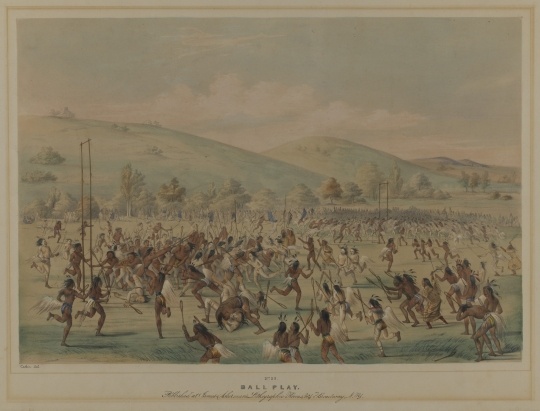
Ball Play (La Crosse)
Ball Play (La Crosse). Lithograph by George Catlin, undated (1966.48.69). Art collection of the Smithsonian American Art Museum. Gift of Mrs. Joseph Harrison, Jr.
Holding Location
More Information
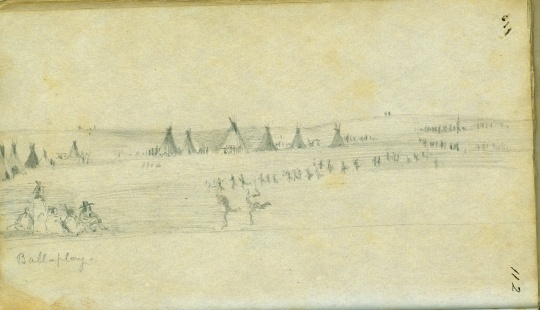
Drawing of a lacrosse game, 1851
Frank B. Mayer collection of sketchbooks, drawings, and oil paintings of Sioux Indians during the 1851 treaty negotiations at Traverse des Sioux and Mendota. From the Edward E. Ayer Digital Collection.
Holding Location
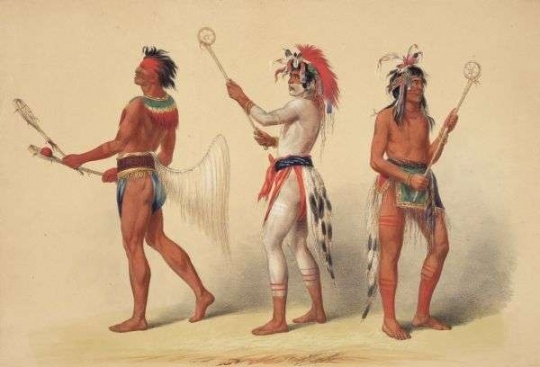
Native Americans with lacrosse sticks
Native Americans with lacrosse sticks. Plate 21 in Catlin's North American Indian Portfolio (1966.48.68).
Holding Location
More Information
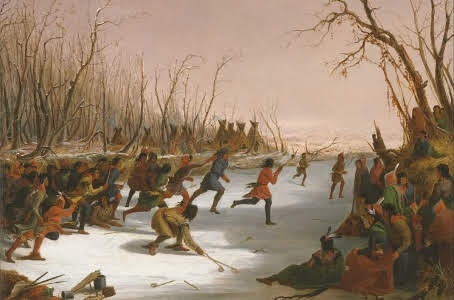
Ballplay of the Dakota on the St. Peters River in winter
Ballplay of the Dakota on the St. Peters River in Winter, 1848. Seth Eastman (1808–1875). Amon Carter Museum of American Art, Fort Worth, Texas.
Holding Location
More Information
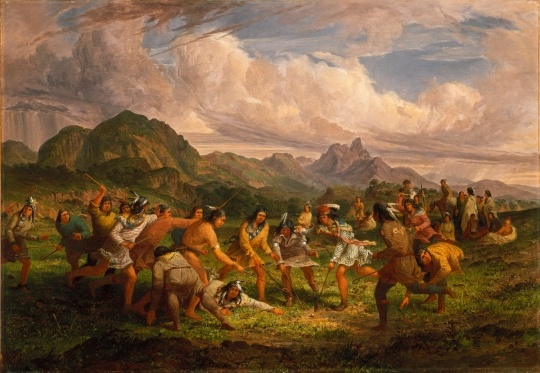
Painting of a lacrosse game by Seth Eastman
Oil-on-canvas painting of a lacrosse game among a group of Dakota by Seth Eastman, 1851.
Holding Location
More Information
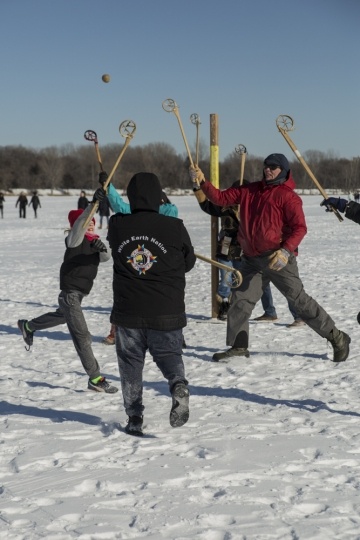
Lacrosse game on White Bear Lake
Lacrosse game on White Bear Lake. Photograph by David Joles, 2016.
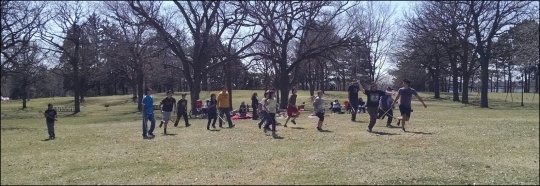
Community lacrosse game in Minneapolis
Community lacrosse game at Nokomis Park, Minneapolis. Photograph by John Hunter, 2015.
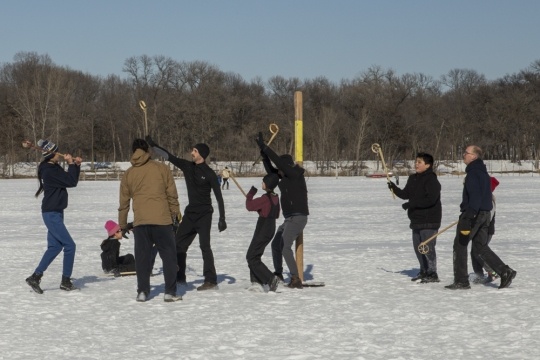
Community lacrosse game at Lake Harriet
Community game at Lake Harriet. Photograph by John Hunter, 2017.
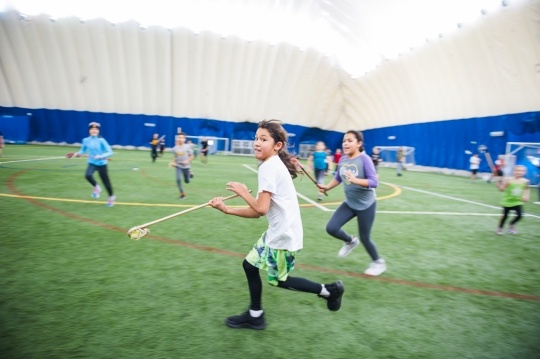
Youth lacrosse game in Savage
Youth lacrosse game in Savage. Photograph by John Other Medicine, 2017.
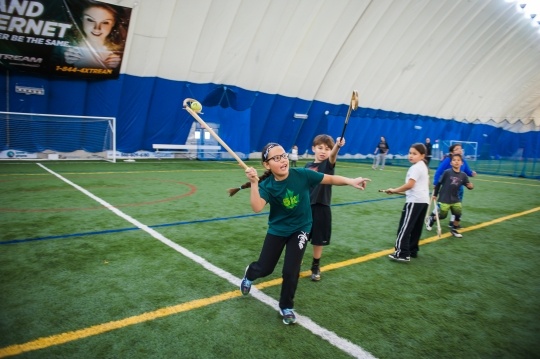
Youth lacrosse game in Savage
Youth game in Savage. Photograph by John Other Medicine, 2017.
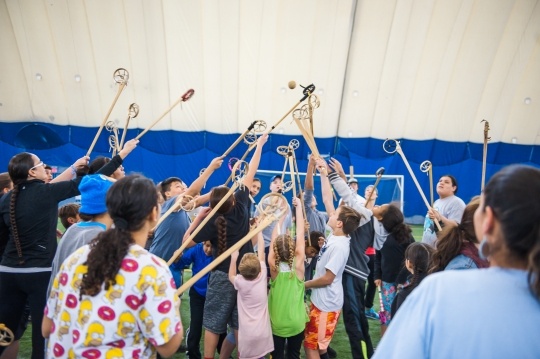
Community lacrosse game in Savage
Community lacrosse game in Savage. Photograph by John Other Medicine, 2017.
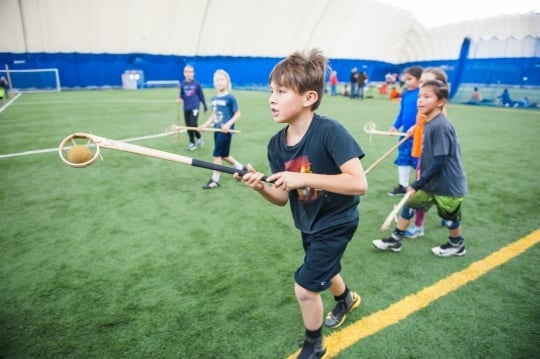
Youth lacrosse game in Savage
Youth game in Savage. Photograph by John Other Medicine, 2017.

Youth lacrosse game in Savage
Youth game in Savage, Minnesota. Photograph by John Other Medicine, 2017.
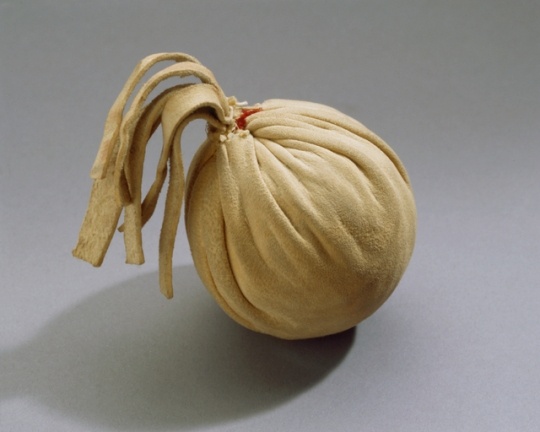
Traditional lacrosse ball
Ojibwe painted leather lacrosse ball made in the early to mid-twentieth century.
All rights reserved
Holding Location
More Information
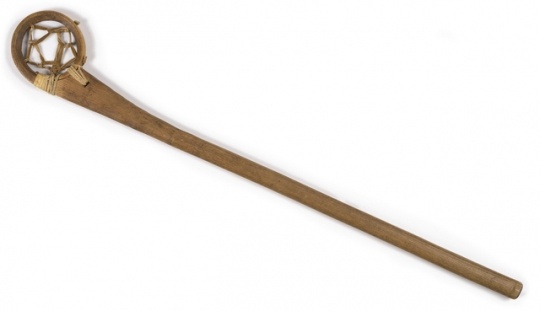
Traditional Ojibwe lacrosse stick
Traditional lacrosse stick used by Jack F. Rohr (Ojibwe) between 1900 and 1932.
All rights reserved
Holding Location
More Information
Related Articles
Turning Point
Artist George Catlin witnesses a massive lacrosse game between hundreds of Dakota and Ojibwe players near Bde Maka Ska on July 4, 1835. After the game had been initially delayed, Catlin made detailed sketches of the players.
Chronology
pre-1700s
1753
1805
1823
1835
1835
1839
1848
1862
1871
1896
1902
1918
Bibliography
Blegen, Theodore, ed. “Armistice and War on the Minnesota Frontier.” Minnesota History 24, no. 1 (March 1943): 11–25.
http://collections.mnhs.org/MNHistoryMagazine/articles/24/v24i01p011-025.pdf
Dietrich, Mark. “A ‘Good Man’ In Changing Times, Cloud Man, the Dakota Leader, His Life and Times.” Ramsey County History 1 (Spring 2001): 4–24.
Eastman, Charles A. Indian Boyhood. New York: McClure, Phillips, 1902.
P2217
Frank A. Johnson diary and related papers, 1871–1872, 1882
Manuscripts Collection, Minnesota Historical Society, St. Paul
Description: Typed copy of the diary (March 26, 1871–March 28, 1872) kept by a Northern Pacific Railroad telegrapher in a number of cities in Minnesota. Describes a medicine dance and lacrosse games of the Ojibwe.
Pond, Samuel W. "The Dakota or Sioux as They Were in Minnesota in 1834." In Collections of the Minnesota Historical Society 12 ( ): 319–501. St. Paul: Minnesota Historical Society Press, 1908.
Radin, Paul. The Winnebago Tribe. Lincoln, NE: University of Nebraska Press, 1973.
Vennum, Thomas. American Indian Lacrosse: Little Brother of War. Washington, DC: Smithsonian Institution, 1994.
Westerman, Gwen, and Bruce White. “Dakota Ball Play.” In Mni Sota Makoce: The Land of the Dakota (St. Paul: Minnesota Historical Society Press, 2012), 111–119.
Related Resources
Childs, J. Alan. Minnesota Lacrosse: A History. [Minnesota]: CreateSpace Independent Publishing Platform, 2015.
Coulson, Art. The Creator’s Game: A Story of Baaga’adowe / Lacrosse. St. Paul: Minnesota Historical Society Press, 2013.
Morgan, Jerry. Baaga'adowe = Play Lacrosse. Minnesota: Leech Lake Band of Ojibwe, Youth Division, 2004.

















